6月2日上午9:00,材料科学与工程学院在千佛山校区主楼二楼会议室举办“求材”学术论坛。此次论坛由山东大学研究生院、材料液固结构演变与加工教育部重点实验室及材料科学与工程学院共同主办,材料学院研究生会承办。应山东大学慈立杰教授邀请,颜清宇教授、范红金教授和徐梽川教授到访山东大学,并分别作了题为“Multi-functional Few Layered Black Phosphorus Composite”、“High Rate Performance of Metal-ion Battery Electrodes”和“Oxygen Electrocatalysis on Transition Metal Spinel Oxides”的报告。材料学院慈立杰老师、冯金奎老师、司鹏超老师等出席此次论坛,材料学院各年级研究生参加了此次论坛。
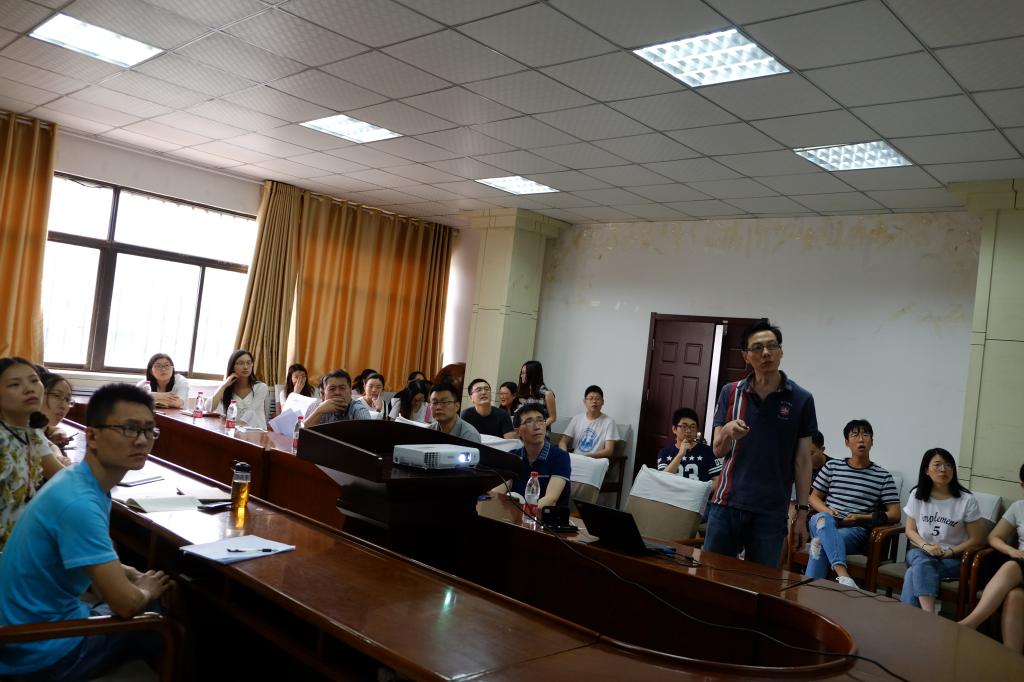
颜清宇首先介绍了黑磷作为一种电池负极材料的优势,相比于白磷和红磷,黑磷的导电性最好。然后介绍了两种制备方法:液相剥离法和高压反应釜法,液相剥离制备得到的黑磷具有热电性能好、储能好和空气稳定性好等优点,但容量较小成为制约其发展的关键点,高压反应釜制备的样品表面氧化物较多,应用也受到限制。最后,他们课题组将LiP加入电池材料中,提高了导电性并降低了导热率,取得了显著的成果。
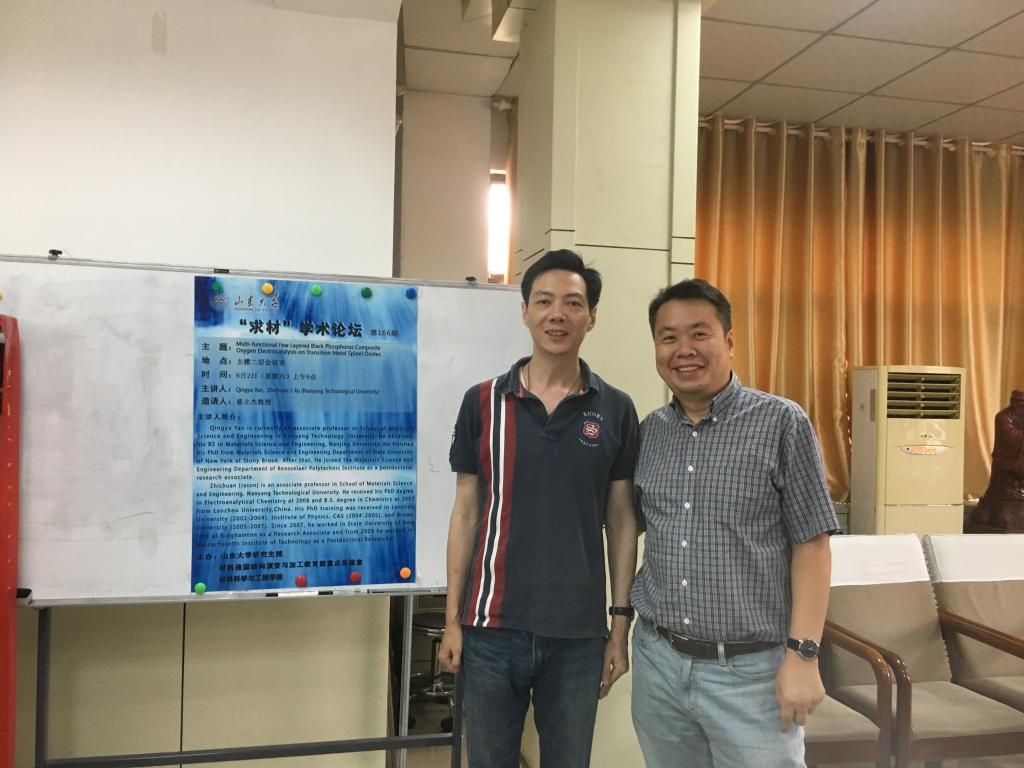
范金红以如何提高金属离子电池电极的高倍率性能为主题,详细介绍了通过纳米尺寸减小、增加扫描速率或放电电流、晶体结构(TiO2,WO3·2H2O)等方法提高金属离子电池电极的高倍率性能,并最终得到两个结论:(1)二维材料设计的高非本征赝电容效应具有高利率和更好稳定性的优点;(2)通过表面钝化使Sn基电极循环稳定性变的更容易(loose TiO2 shell,SiOx/rGO,vertical graphene)。
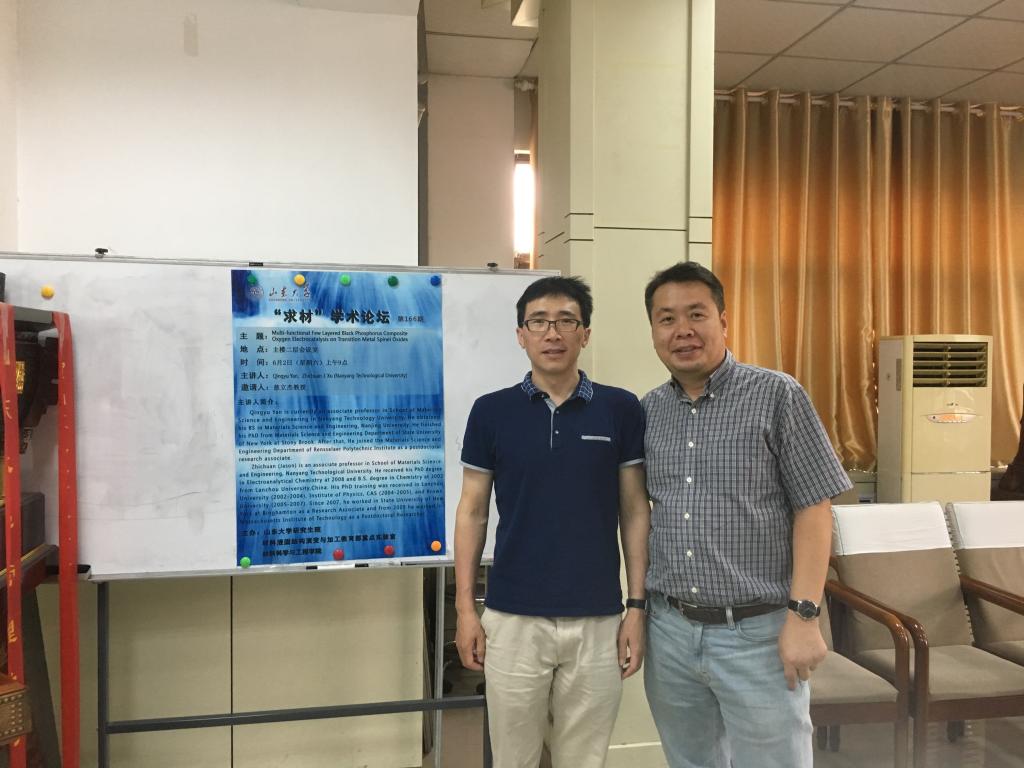
徐梽川通过几个例子详细介绍了过渡金属尖晶石氧化物的氧电催化性能研究,他说道,材料本质决定材料的性能,反向轨道电子数决定材料的活性。他还说道,价态变化能力和取代阳离子的几何占有性决定了尖晶石铁氧体的赝电容性。最后发现在八面体位点填充阳离子是过渡金属氧化物尖晶石的ORR&OER活性,并发现一种高活性的OER催化剂材料。
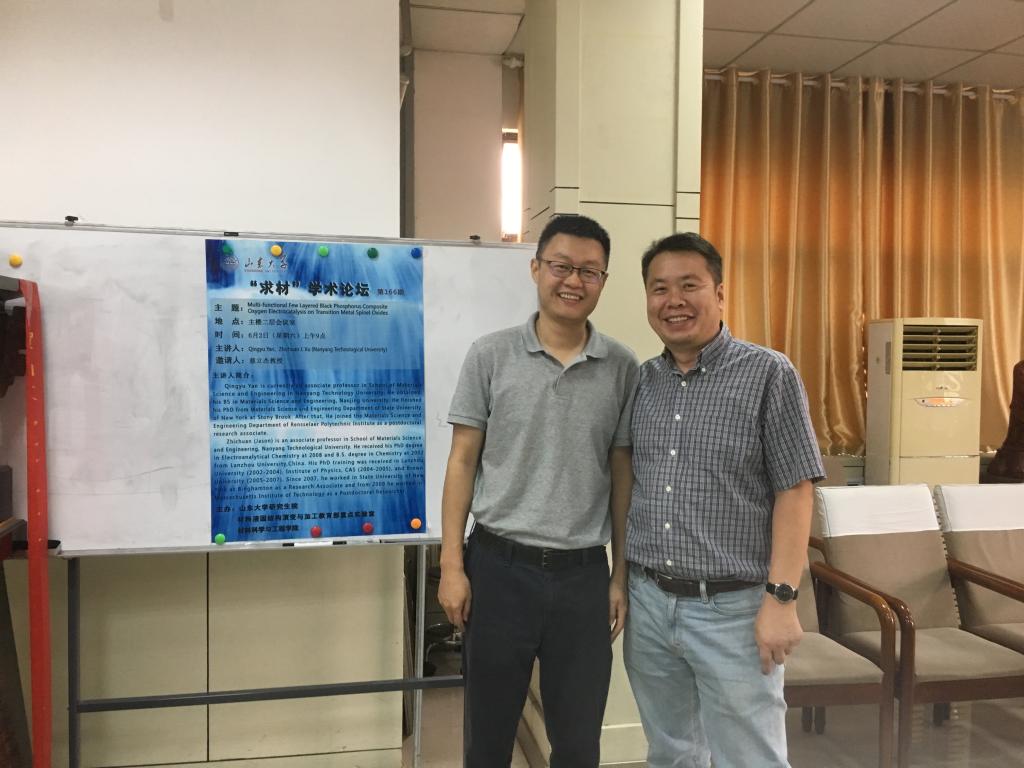
三位教授为我院师生奉献了一场精彩的报告,报告结束后,与会师生和报告人热烈讨论,学术氛围十分浓厚,会场不时响起热烈掌声,大家都感到受益匪浅。
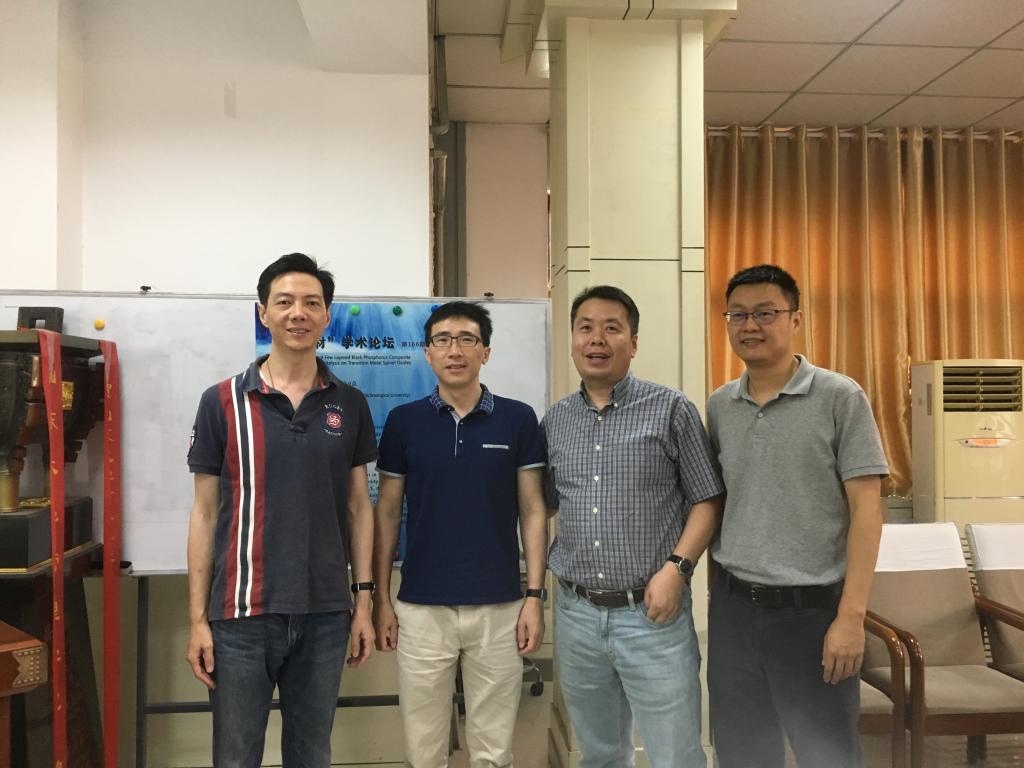
Qingyu Yan ,Qingyu Yan is currently an associate professor in School of Materials Science and Engineering in Nanyang Technology University. He obtained his BS in Materials Science and Engineering, Nanjing University. He finished his PhD from Materials Science and Engineering Department of State University of New York at Stony Brook. After that, He joined the Materials Science and Engineering Department of Rensselaer Polytechnic Institute as a postdoctoral research associate. He joined School of Materials Science and Engineering of Nanyang Technological University as an assistant professor in early 2008 and became an associate Professor in 2013. He is the board member of Materials Research Express, (an IOP Journal) since 2016. Yan has published more than 250 papers on two research area: (1) thermoelectric materials; (2) electrochemical properties of nanocrystals, with a total citation of 14757 and a h-Index of 62.
Zhichuan J. Xu ,Zhichuan (Jason) is an associate professor in School of Materials Science and Engineering, Nanyang Technological University. He received his PhD degree in Electroanalytical Chemistry at 2008 and B.S. degree in Chemistry at 2002 from Lanzhou University, China. His PhD training was received in Lanzhou University (2002-2004), Institute of Physics, CAS (2004-2005), and Brown University (2005-2007). Since 2007, he worked in State University of New York at Binghamton as a Research Associate and from 2009 he worked in Massachusetts Institute of Technology as a Postdoctoral Researcher. Dr. Xu is member of International Society of Electrochemistry (ISE) and The Electrochemistry Society (ECS). He is a Fellow of The Royal Society of Chemistry (FRSC). He served as a guest editor for the special issue ICEI2016 of Electrochimica Acta. He also services as an associate editor for Nano-Micro Letters and the vice president of ECS Singapore Section.